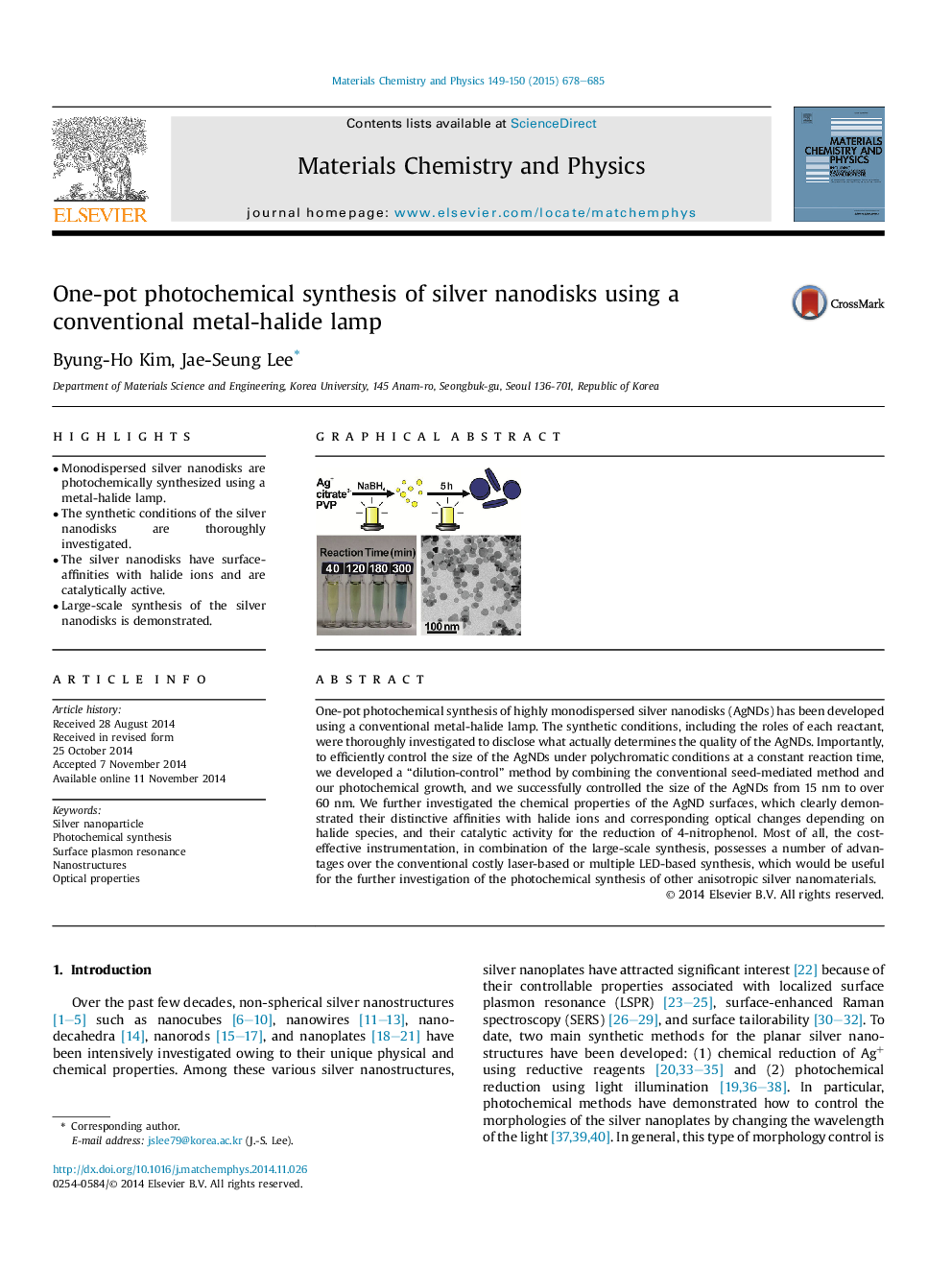| Article ID | Journal | Published Year | Pages | File Type |
|---|---|---|---|---|
| 1521468 | Materials Chemistry and Physics | 2015 | 8 Pages |
•Monodispersed silver nanodisks are photochemically synthesized using a metal-halide lamp.•The synthetic conditions of the silver nanodisks are thoroughly investigated.•The silver nanodisks have surface-affinities with halide ions and are catalytically active.•Large-scale synthesis of the silver nanodisks is demonstrated.
One-pot photochemical synthesis of highly monodispersed silver nanodisks (AgNDs) has been developed using a conventional metal-halide lamp. The synthetic conditions, including the roles of each reactant, were thoroughly investigated to disclose what actually determines the quality of the AgNDs. Importantly, to efficiently control the size of the AgNDs under polychromatic conditions at a constant reaction time, we developed a “dilution-control” method by combining the conventional seed-mediated method and our photochemical growth, and we successfully controlled the size of the AgNDs from 15 nm to over 60 nm. We further investigated the chemical properties of the AgND surfaces, which clearly demonstrated their distinctive affinities with halide ions and corresponding optical changes depending on halide species, and their catalytic activity for the reduction of 4-nitrophenol. Most of all, the cost-effective instrumentation, in combination of the large-scale synthesis, possesses a number of advantages over the conventional costly laser-based or multiple LED-based synthesis, which would be useful for the further investigation of the photochemical synthesis of other anisotropic silver nanomaterials.
Graphical abstractFigure optionsDownload full-size imageDownload as PowerPoint slide
